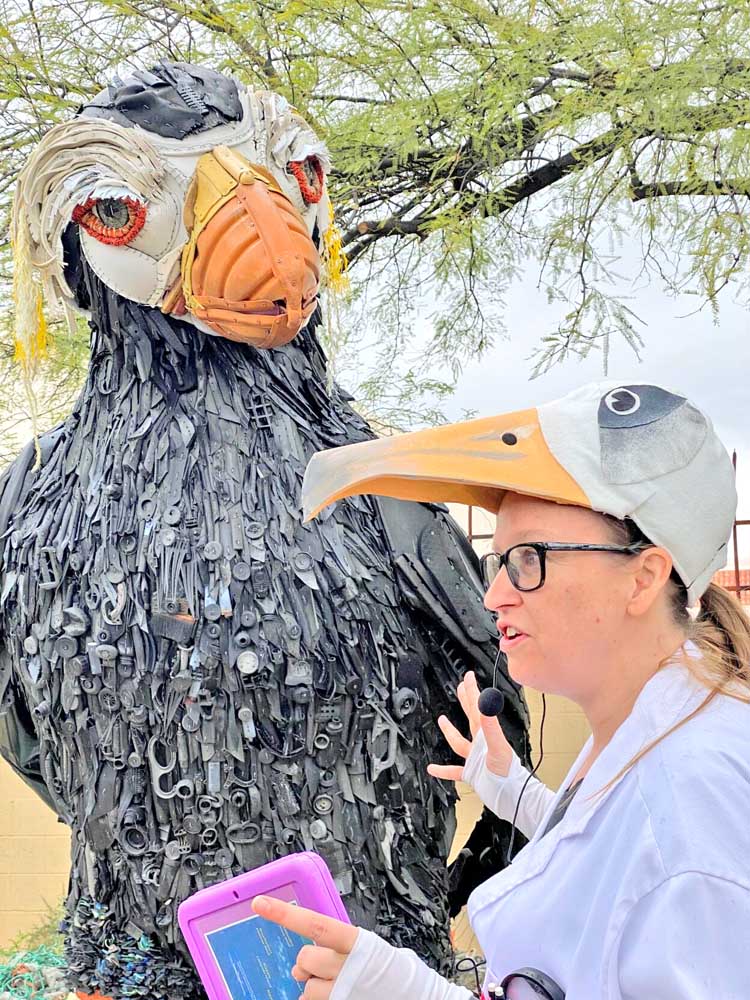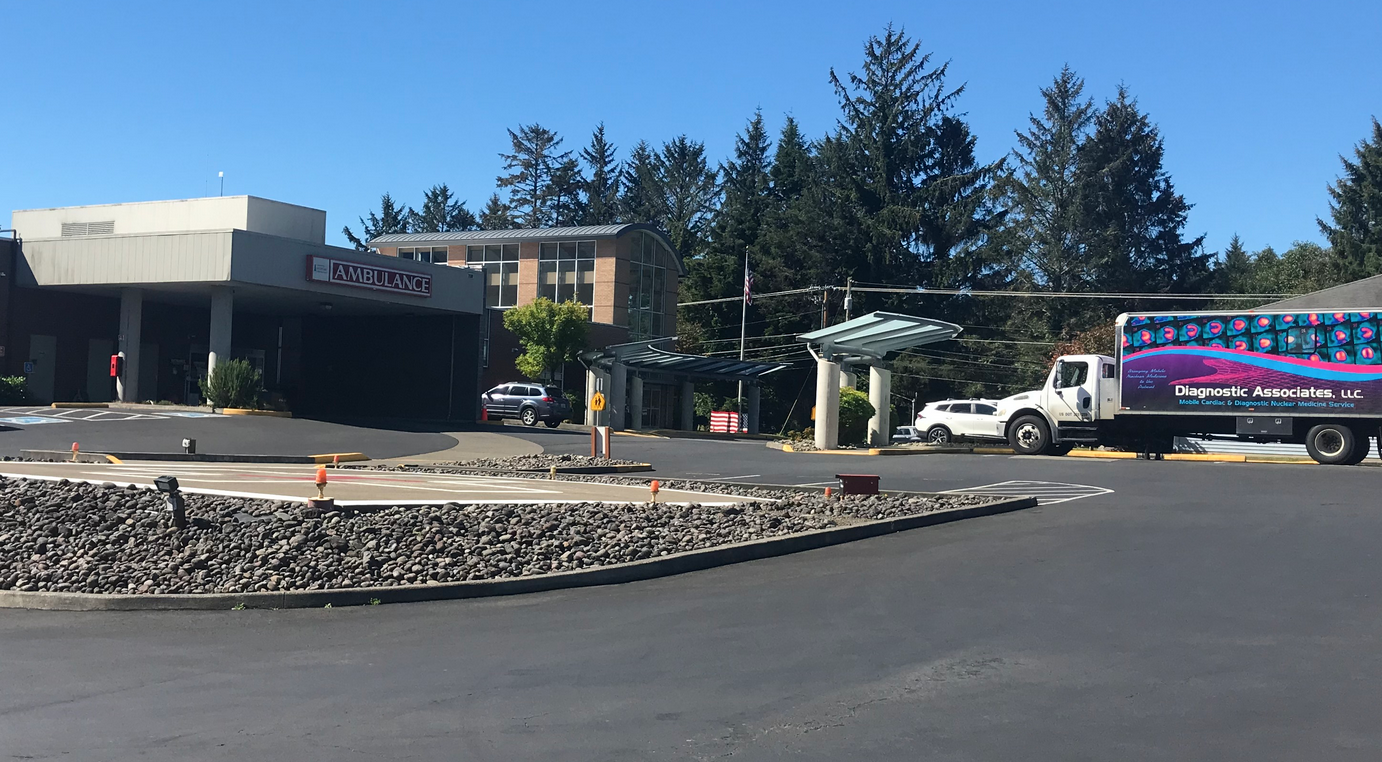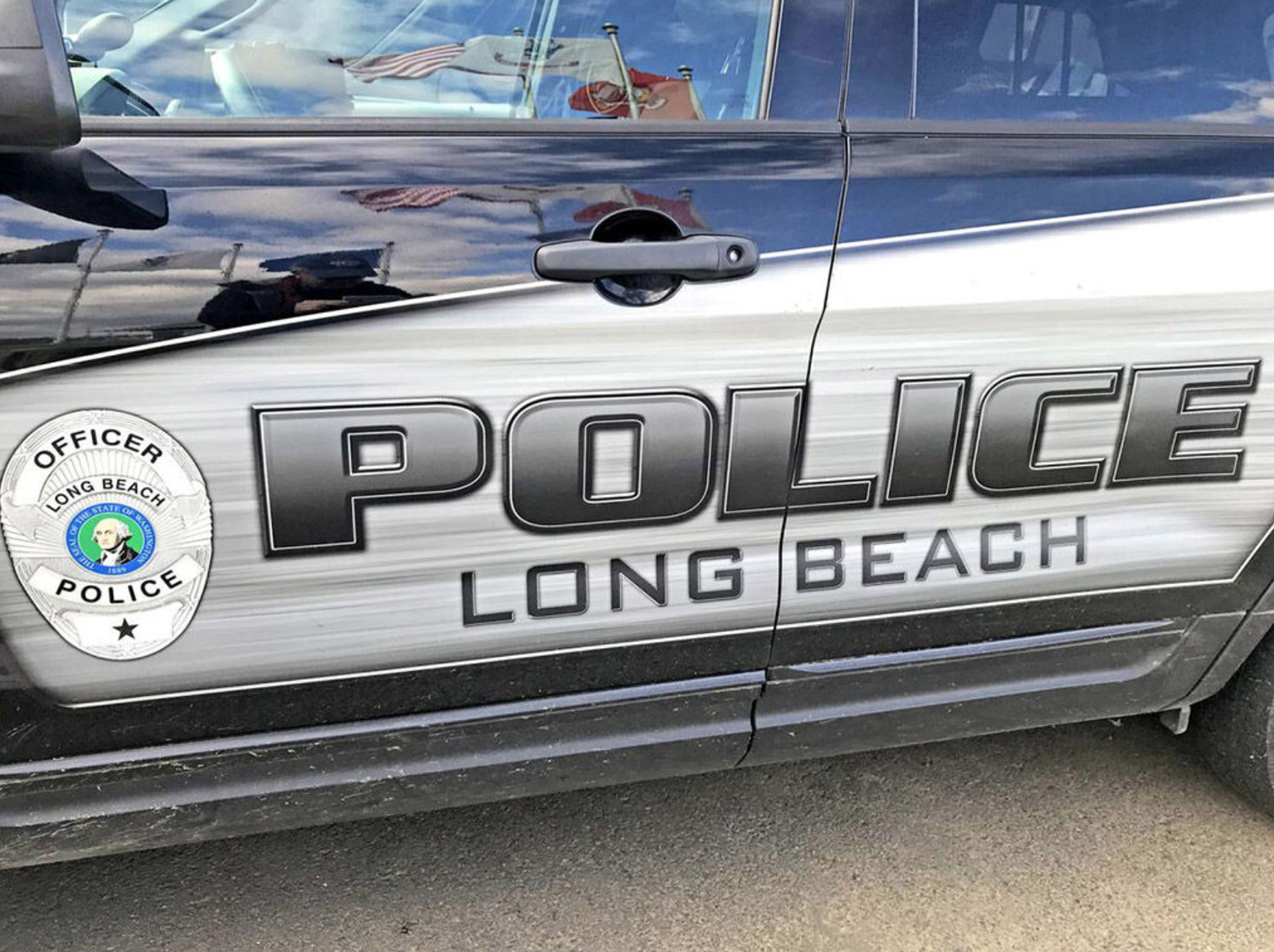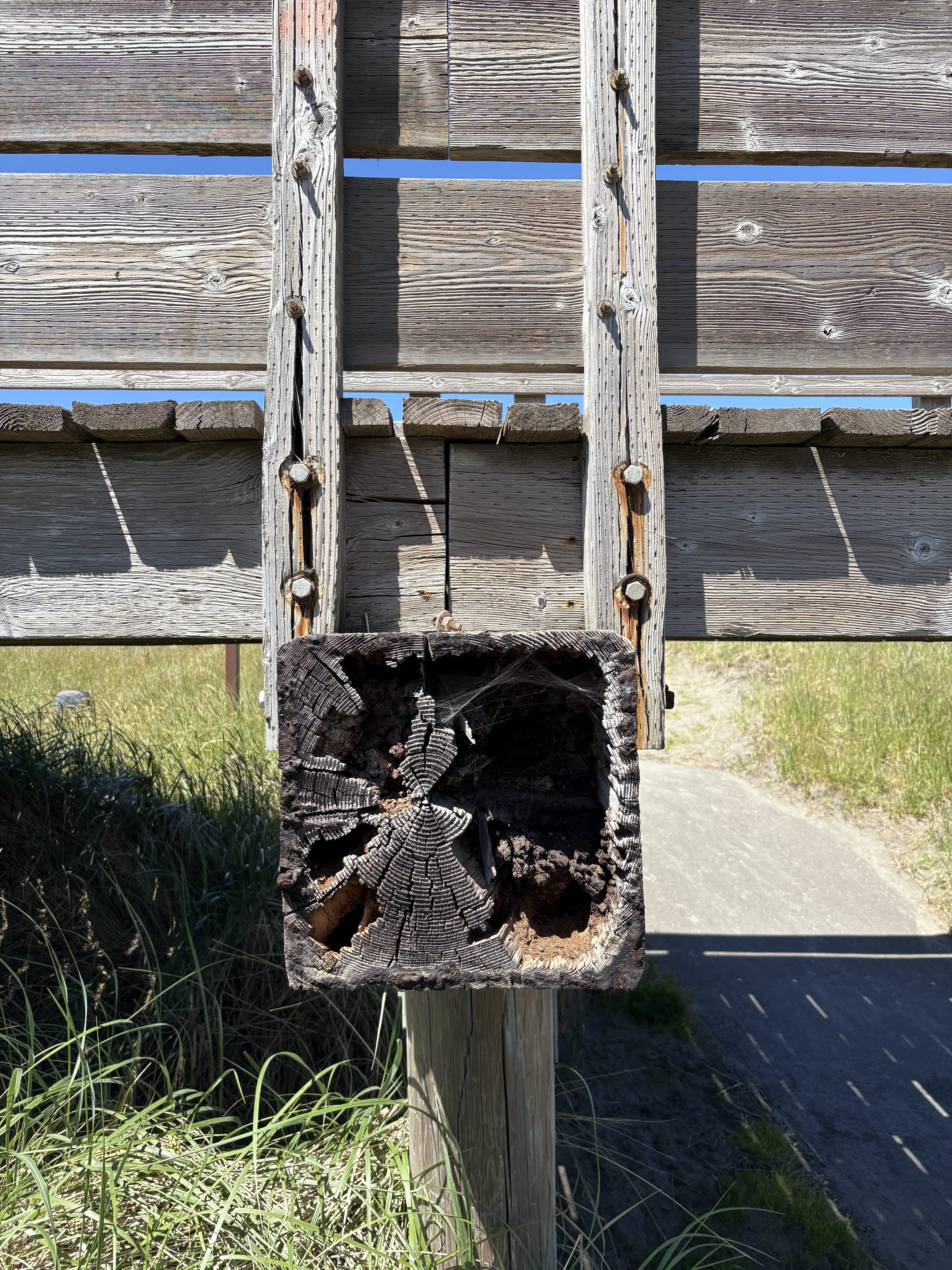Coast Chronicles: Snowbird report: ‘Washed Ashore’
Published 7:18 am Monday, March 18, 2024

- Doctor “Albee Tross” (Cristin Phibbs, Ph.D.) guides a tour of the “Washed Ashore” sea creatures — this one is a tufted puffin — made completely of plastic detritus from the ocean.
You Peninsulites will be gratified to know that on several days temps have been higher at the beach than they have been down here in Tucsonan climes. There have been many days of blustery clouds, lots of wind, and even heavy rain — many mornings I’ve been huddled by the heater clutching my cuppa joe.
Trending
And in Silver City, New Mexico, another of my southern haunts, the overnight temperatures have still been hovering around freezing — of course, Silver has an excuse for that. After all, they’re situated at 6,000 feet on the Continental Divide.
But it seems wherever you live, people are complaining about the weather, or about a thousand other things. And after several mortality scares right in my very own pod, I have to say it’s just sufficient to wake up in the morning, greet my buds from afar and disregard whatever is going on outside these walls and windows.
‘Washed Ashore’
I thought I’d be continuing my talk about Peninsula women (and I will forge ahead on that topic next week), but in the meantime I want to talk about a couple women I met here at the Botanical Gardens in Tucson. It’s just another reminder about how connected we all are no matter where we live.
I was alerted by a visiting Oregonian friend, also a snowbird, that an amazing roving art show with deep connections to the Pacific Northwest was on display right here in Tucson: “Washed Ashore, Art to Save the Sea,” is an environmental arts and educational project sponsored by Artula Institute For Arts and Environmental Education (www.washedashore.org/artula). They are headquartered in Bandon, Oregon and are all about beach detritus.
But before I go on, let’s go back in time to Dec. 21, 1967, and the release of “The Graduate.” Not only did this iconic film launch the career of Dustin Hoffman, and — at the time — the scandalous idea that older women might want to sleep with younger men. Some of you might remember that famous line from the film. No, not, “Mrs. Robinson, you’re trying to seduce me… aren’t you?” (P.S. Anne Bancroft was only six years older than Hoffman at the time of the film.)
No, that other line: when Mr. McGuire takes Ben (Hoffman) aside and gives him this piece of advice, “I just want to say one word to you, just one word. Are you listening?…” Ben replies, “Yes, sir.” McGuire says, “Plastics. There’s a great future in plastics. Think about it. ‘Nuf said.”
Plastics
Well, since then there has actually not been enough said about plastics. We now know that plastics — in many forms from large debris to micro particles — are on virtually every continent from the most remote to the most populated. Microplastics permeate the globe from the 17-mile-deep Mariana Trench to the top of Mount Everest. We have plastics in our food, our fish, our rivers, desert sands, soil, mother’s milk and Arctic snow. We have plastics in our bodies. (Scientists have discovered that microplastics lodge in arterial plaque, creating a much higher risk for heart attack, stroke, or negative results from carotid surgeries.) Since the 1950s, we have produced more than eight billion metric tons of plastics, which do not biodegrade over time but simply break down into smaller and smaller particles.
Yep, in 1967 the future of plastics looked rosy. But, as usual for humans, we had no idea what we were getting ourselves into.
So, what can we do about it now? Groups like “Washed Ashore” are trying to raise awareness with all people but especially children, since they’re the ones we’re leaving this problem — and others. I have to say, though, even as sustainably aware as I think I am, I continue to learn about ways to reduce my own complicity with the plastics industry. I hadn’t thought, for instance, that those oh-so-handy little dishwasher and washing machine pods that reputedly dissolve are a problem, but they are. They’re made of polyvinyl alcohol, called PVA or PVOH. They dissolve in water but they don’t disappear; their residue becomes microplastics.
A group called Notpla is exploring the production of a pod-type film made from seaweed as an alternative. We’ll need people who can develop more of these entrepreneurial earth-friendly technologies. And, as consumers, we need to spread the word about changing our habits. We need to support these inventions and interventions with our dollars.
‘Priscilla, Rainbow Parrot Fish’
But back to the Tucson Botanical Garden’s show. We seem to still be in the early stages of raising global awareness on the plastics issue. As in any earth-wide problem, whether climate change or covid, there is a sequence of activities that must unfold before a critical mass catalyzes solutions. The urgency seems to be in a ratio related to how close to our own survival the problem is. Species collapse, well, maybe we’ll lose a few more frogs. But plastic in my arteries, OK, that could get my attention. (And yours too, I hope.)
The “Washed Ashore” organization has mobilized volunteers who scan the beaches in the Pacific Northwest (in this case primarily around Bandon). They find and collect bits and bites of plastic that are then washed and sorted by size and color. Then the artists get to work creating amazing sea creatures of these plastic pieces large and small. No piece of plastic is painted; they are all used just as they are. If you look closely at the sea creatures in this exhibit you will see everything from bottle caps to Crocs; toy shovels to plastic hangers; fishing nets to cottage cheese containers; tarps to fishing lures.
As Laura Uccetta, Botanical Garden youth education program coordinator said, “What’s interesting about the plastic pollution issue is that our trash gets moved around the world so much. Even in a completely land-locked place, like Tucson, our trash will end up on the other side of the world at some point, whether you have an ocean next to you or not. We’re all connected.”
“I’ve been doing a lot of research for this show and it can be overwhelming because you think, ‘What can I do? — it’s such a global issue.’ It is! But I always tell people even though there’s not one person who can solve this problem if we all do something, then that action will carry.”
“This exhibit is so great because it’s something that gets us thinking, and the more that we’re thinking about this problem — the more it’s in our face — the more we can become educated about it.”
Let’s hear it for human ingenuity
Just then “Doctor Albee Tross,” strolled up (the real Ph.D., Dr. Cristin Phibbs) all in white with a beak-hat and her clipboard ready to lead our tour, liberally sprinkled with what can only be described as dad jokes. (“What did the ocean say to the shore? — Nothing, it just waved!”) Aside from the astoundingly enormous and otherwise biologically true-to-form sea creatures, the last tour stop was in some ways the best.
There is a manufacturing start-up called ByBlock in Los Angeles, which uses steam to compress all types of plastic into “byfusion” materials for commercial or residential use (www.byfusion.com). As they say, “ByBlocks put plastic waste back to work.” (There is no by-waste — one ton of plastics makes one ton of blocks!)
The blocks are actually beautiful, a sort of fiesta of confetti color with indentations that allow the blocks to fit together. Tucson doesn’t have its own manufacturing site yet — it’s shipping plastic to LA for processing. But eventually the Botanical Gardens will buy back byfusion blocks (say that fast a couple times) that they intend to use for raised beds and other construction projects.
Like the Notpla seaweed pod-makers above, the ByBlocks folks are utilizing one thing humans are really good at — ingenuity — to create a better world. On the one hand I was captivated by all the creatures made of plastic set in desert scenes of barrel cactus, palo verde, and swaying grasses; on the other hand, I was sad beyond measure to know we are killing our beloved ocean and sea creatures that eat ocean plastics. We must do better.
Let’s find a sponsor and suitable place to bring this exhibit to the Peninsula (www.washedashore.org/#) for July 4, 2025!









